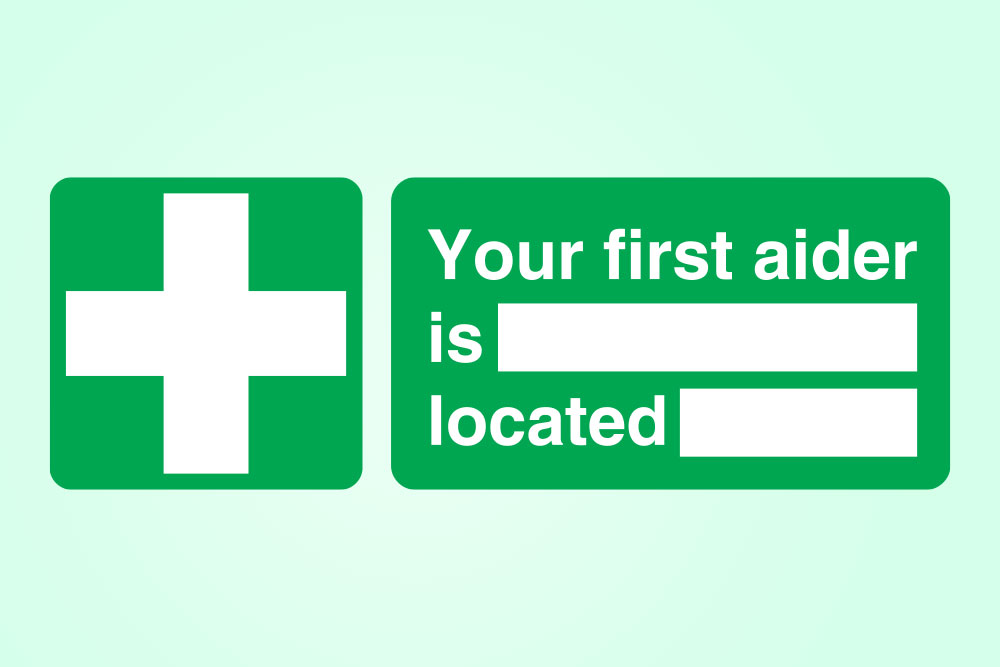
Severe accidents in the workplace are more common than you might think. 565,000 people suffered a non-fatal injury at work and 123 workers were killed because of workplace accidents in 2021/22, according to UK government data. If you have a trained first aider, they can assist an injured person until help arrives.
But precisely what are the responsibilities of a first aider? In this article, we look at what first aiders do, what the law is around first aiders and explain the responsibilities of a first aider.
What is a First Aider?
A first aider is someone trained to respond appropriately in an emergency. First aiders provide immediate, emergency assistance to a person that has been injured or fallen ill. The care provided by a first aider can be minor, such as bandaging up a wound or treating a burn.
However, first aiders may also provide lifesaving assistance, such as keeping an injured or ill person stable until emergency services arrive.
To become a first aider, you must have completed an accredited training course on first aid at work, or other appropriate training or qualifications, according to the Health and Safety Executive (HSE). The HSE advises that how much training a first aider requires should be determined by the results of a workplace first aid needs assessment.
Does Your Workplace Need to Have a First Aider?
On average, over 147 people die due to workplace accidents every year, according to data gathered by the HSE. Many of these tragedies could have been prevented if the person had received first aid treatment in time. Unfortunately, the same HSE figures show that only four in ten workers had the skills to provide emergency assistance. Having trained first aiders at your workplace can be the difference.

The Responsibilities of a First Aider
The medical service organisation St John Ambulance advises that the primary role of a first aider is to ‘keep an injured person safe and to cause no further harm to them’. But first aid incidents can range from being relatively minor to incredibly serious. Knowing what is expected of a first aider can be complicated.
St John Ambulance has outlined six duties for first aiders. The six responsibilities of a first aider are:
1: Calmly & Quickly Assess the Situation
First aiders must make a calm, rapid assessment of any emergency medical situation. They must establish if it’s safe to approach the injured or sick person, identify the cause of the incident, and determine how many people are injured.
2: Take Measures to Protect Yourself and the Casualty
First aiders must ensure the injured or ill person is safe from harm. Never put yourself at risk and do not put the injured or sick person at risk. Only move the casualty if leaving them in place would cause more harm. Call 112 or 999 and wait for emergency help if you can’t make the area safe.
3: Take Measures to Prevent the Spread of Infection
Wash your hands thoroughly with soap and water or use a disinfectant hand sanitising gel to clean them. Wear disposable surgical gloves. If none are available, protect your hands with a clean plastic bag or ask the injured person to dress their wounds themselves, if they can. Avoid breathing, coughing or sneezing over an open wound or a casualty.
4: Provide Comfort & Reassurance
People who have been seriously injured or fall suddenly ill are often in shock. As a first aider, you should take measures to calm and reassure the person. Introduce yourself, explain what you will do and why, and reassure the person that help is coming. You should treat a casualty respectfully and ask for consent before touching them.
5: Assess & Provide First Aid Treatment
In cases with more than one casualty, treat those with more life-threatening conditions or injuries first. The types of treatments that may need to be provided include:
- Moving someone into the recovery position
- Providing Cardiopulmonary Resuscitation (CPR)
- Stopping bleeding by elevating limbs and applying pressure
- Treating a heart attack with an Automated External Defibrillator (AED)
- Supporting and immobilising a fractured or broken limb
6: Arrange for the Right Type of Assistance
First aiders must be able to assess what type of assistance is needed and then take steps to ensure this help is provided. A person may need help dressing the wound for a mild injury. Suppose a person has a severe injury or condition that is not likely to worsen. In that case, an ambulance may be needed or other transport to a hospital arranged.
Sometimes, a first aider should strongly recommend that a person seek follow-up care from a medical professional. It’s advisable to stay with the casualty until help arrives.
How to Become a First Aider
A first aider must have the right skills to be competent to hold the position. Our First Aid at Work course gives participants basic first-aid principles. Trainees will learn how to effectively assist anyone injured or who falls ill at work. It’s an effective way to refresh the knowledge they would have gained in their initial face-to-face first-aid training.
Completing this course will give trainees crucial first-aid knowledge that could make all the difference in an emergency. Most importantly, the skills you gain on the course could help to save someone’s life.


















































































































































































































































































































































































































































































































































































































































































































































